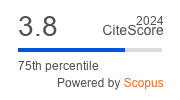Context-Specific, User-Centred: Designing Urban Green Infrastructure to Effectively Mitigate Urban Density and Heat Stress
| Views: | 4266 | | | Downloads: | 2219 |
Green infrastructure plays a vital role for cities facing the challenges of urbanisation and climate change. It has the potential to mitigate the adverse effects of urban density and the heat island effect, enhancing the ecological and social resilience of cities and their inhabitants. This study identifies contextual, psychological, and social factors which influence people’s subjective evaluation of urban green infrastructure (UGI), density, and heat stress. Planning recommendations for effective, context-specific, user-centred design are developed to increase the social and health benefits of UGI in limited space. To do so, a mixed-methods approach that combines social surveys, GIS-analysis, and microclimate modelling was employed. The field studies were undertaken in two contrasting neighbourhoods in Munich, Germany: a densely built and scarcely vegetated inner-city neighbourhood and a declaimed “green and compact” neighbourhood at the outskirts. Both sites are assessed in terms of their supply of green infrastructure, building and population density, and outdoor summer heat loads drawing on geostatistical data and mean radiant temperature modelling. This assessment is compared to the inhabitants’ subjective evaluation thereof retrieved from face-to-face questionnaires, and semi-standardised interviews. The results indicate that the existence and the amount of UGI per se are not decisive for people’s perception of urban heat, density, and neighbourhood attractiveness. It is rather the perceived accessibility of green spaces, their design, quality, and contextual factors like traffic or the presence of other people that define its value for urban dwellers.
© Julia Mittermüller, Sabrina Erlwein, Amelie Bauer, Tatjana Trokai, Sophie Duschinger, Michael Schönemann. This is an open access article distributed under the terms of the Creative Commons Attribution 4.0 license (http://creativecommons.org/licenses/by/4.0), which permits any use, distribution, and reproduction of the work without further permission provided the original author(s) and source are credited.


